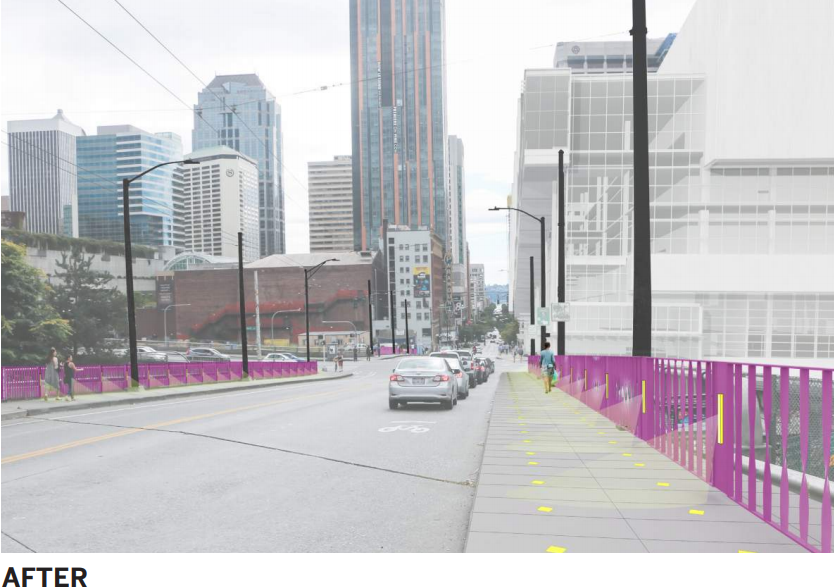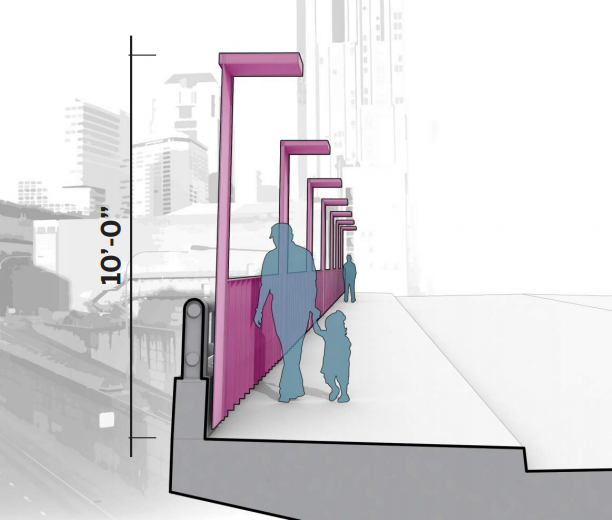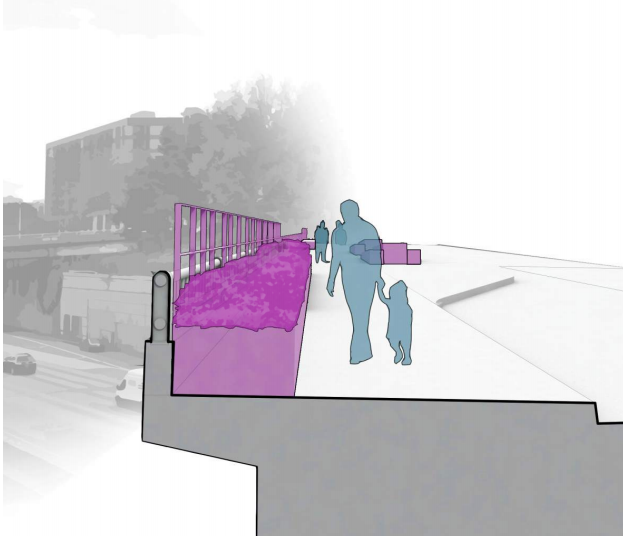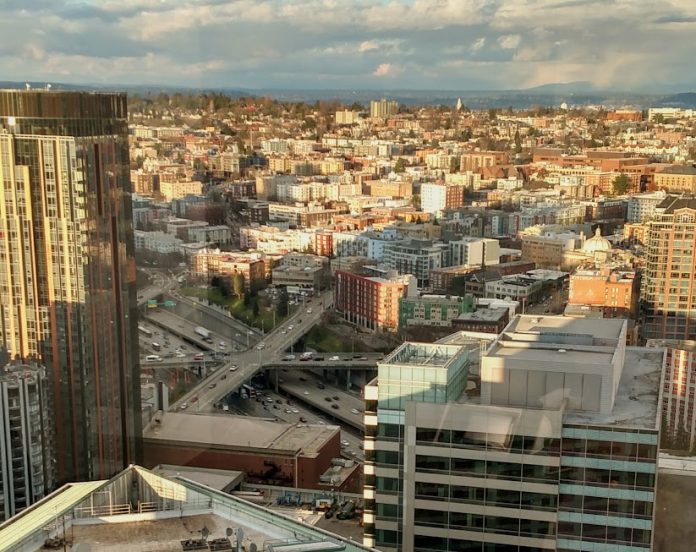At the first public benefits hearing of the Washington State Convention Center (WSCC) Addition, Seattle Design Commissioners danced around a tough truth: planning good public spaces around freeway trenches is difficult.
A clear goal of the Community Package Coalition–a collective of nine community groups–is focused on improving bicycle and pedestrian connections on Pike/Pine St. The problem is those streets cross I-5 and intersect on- and off-ramps with conflict points abounding. Advocates may win support for a protected bike lane–effectively WSCC punted the bike network decision to One Center City–but it’s challenging to design a safe facility that must cross busy freeway on- and off-ramps, and same goes for pedestrians.

Moreover, overpasses just aren’t pleasant places to be. Design commissioners reviewed the project’s sound wall design concepts for the I-5 overpass but didn’t strike upon anything that worked particularly well.

Even efforts to add a raised planter don’t really seem to add much to the pedestrian experience on the Pike Street overpass. Fundamentally it’s still going to be loud and smelly considering the volume of car and truck traffic below. Plus, the raised planters decrease the amount of usable sidewalk for pedestrians.

Of course one way to overcome the underwhelming nature of the mitigation around freeway trenches is to build a freeway lid to effectively put the freeway in a tunnel. Unfortunately, the public benefits meeting made clear both the WSCC and several Seattle Design Commissioners consider even a small “proof-of-concept” freeway lid a speculative, time-consuming and expensive avenue to pursue. On the cost front, lid advocates may have noted some irony there considering the WSCC Addition project jumped $200 million in estimated cost last year, going from $1.4 billion to $1.6 billion with little a peep from stakeholders.
Think how much easier it would be to do a Pine Street Renaissance project without having to contend with I-5? The public benefits dollars would go much further and leave pedestrians and bicyclists with a much better experience going to and from Capitol Hill. The ultimate solution for connectivity and placemaking near the WSCC would be to remove I-5 period and replace it with park space, housing, and retail.
It sounds far-fetched now. We motorists are very attached to our freeways. However, remembering the violence it took to shoehorn the freeway through the middle of Seattle in the first place helps put things in perspective. Lidding I-5 would make the spaces next to the freeway trench much more pleasant, encouraging more people to live in those blocks. Removing I-5 would have the added benefit of more easily allowing larger structures to be built over the I-5 right-of-way. Instead of dedicating prime Seattle real estate to car storage, we would be allowing more people to live near the state’s largest job center. More than 50 city blocks could be freed by removing I-5 between I-90 and SR-520 and replacing it with a modest boulevard (or perhaps high speed rail tunnel.) Once built out, those newly freed parcels could host tens of thousands of homes, a signature downtown park, and perhaps a downtown elementary school while we’re at it.
So, while the WSCC might have deemed building a lid too speculative for its public benefits package, clearly doing something big about the I-5 trench–burying it or removing it–is the only way to guarantee quality public space on the border of Capitol Hill and Downtown.
The Seattle Design Commission is considering the WSCC Addition’s urban design merit this Thursday (March 16th) in Room L280 at City Hall from 9am to noon. The commission’s next public benefits hearing is on April 20th. The King County Council is still considering the Convention Place Station land sale that would clear the way for the project–and which David Dahl opined should not be approved.
Monday’s Traffic Meltdown Showed Downtown Freeways are Brittle
Doug Trumm is publisher of The Urbanist. An Urbanist writer since 2015, he dreams of pedestrian streets, bus lanes, and a mass-timber building spree to end our housing crisis. He graduated from the Evans School of Public Policy and Governance at the University of Washington in 2019. He lives in Seattle's Fremont neighborhood and loves to explore the city by foot and by bike.


